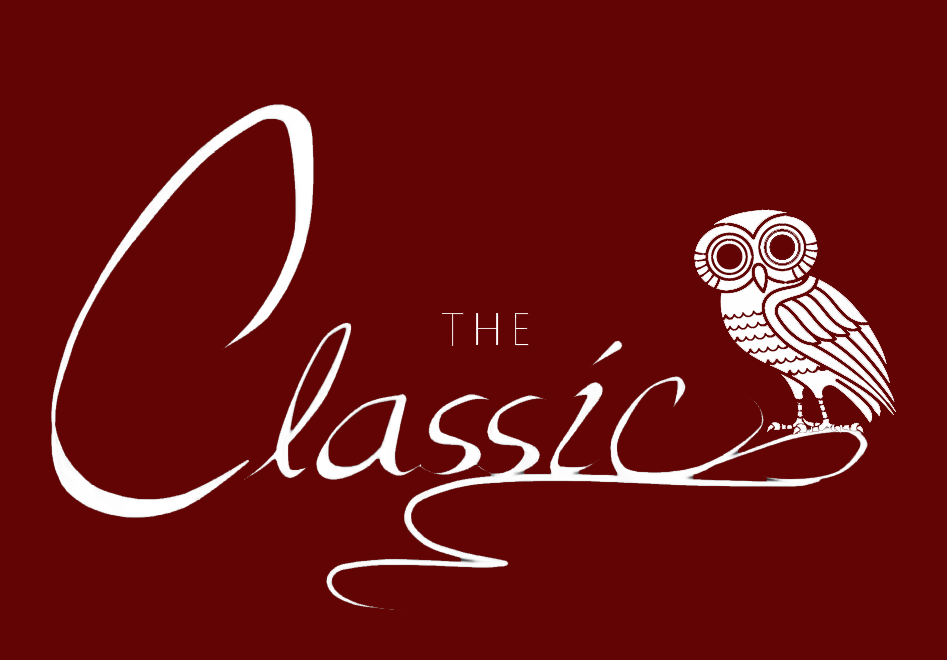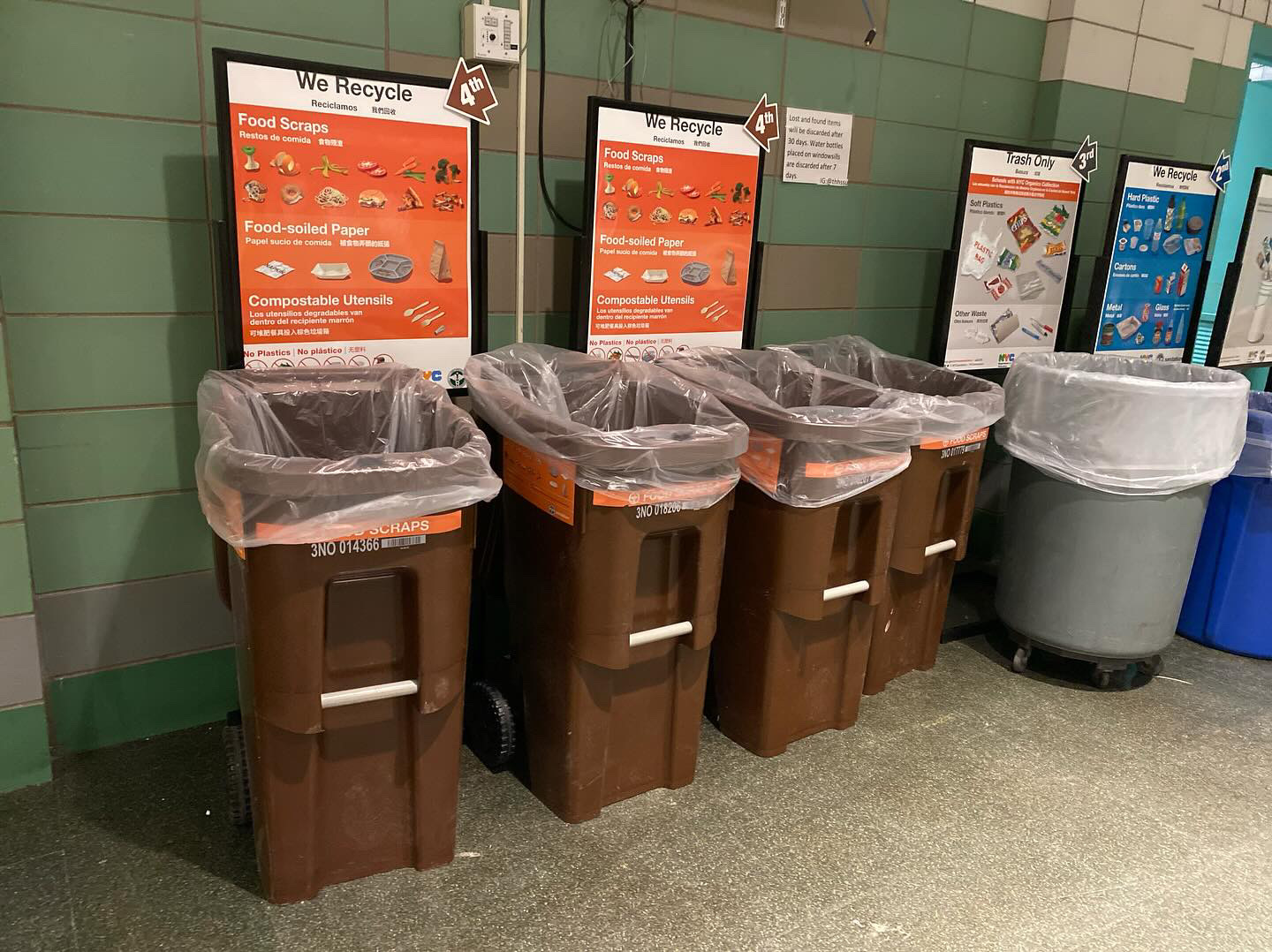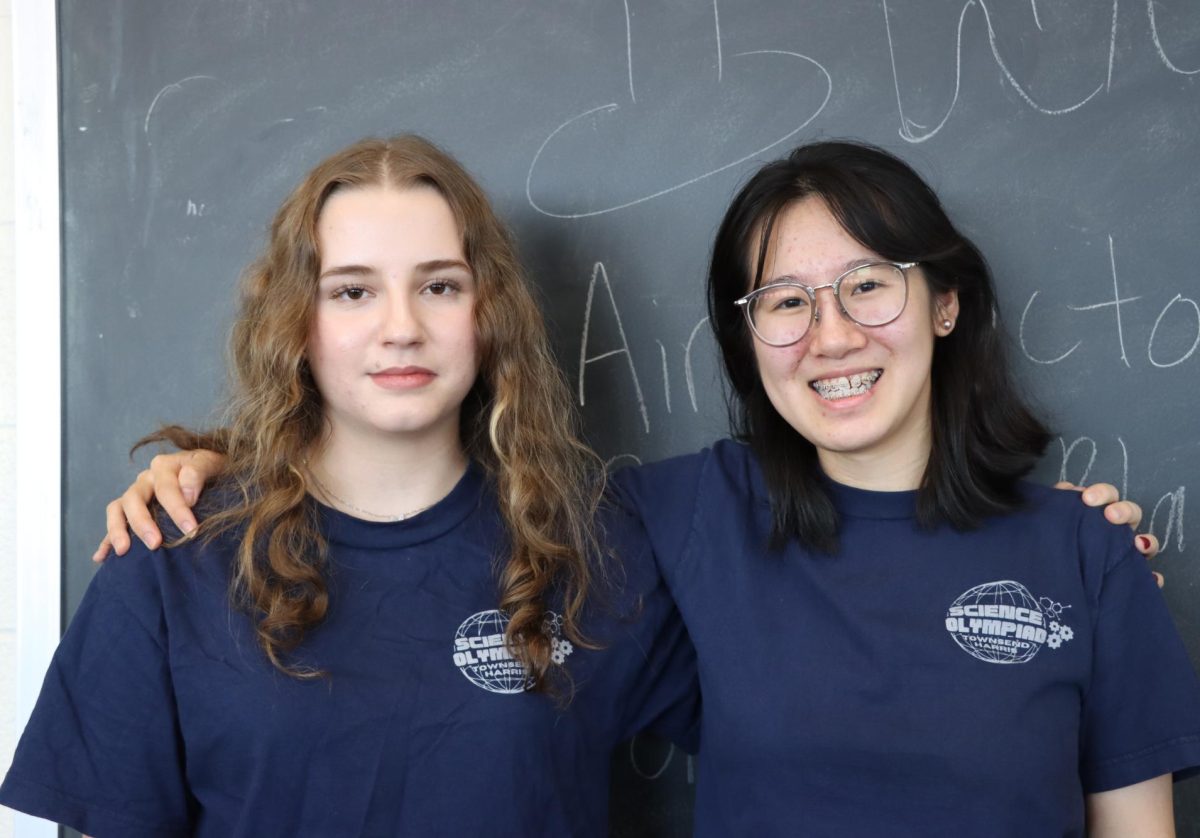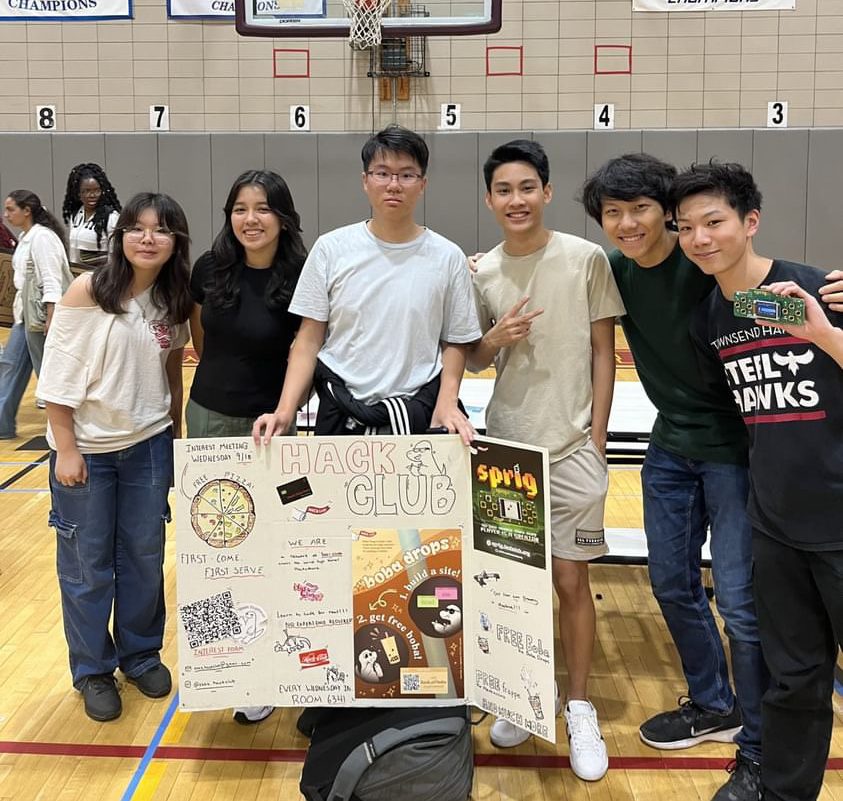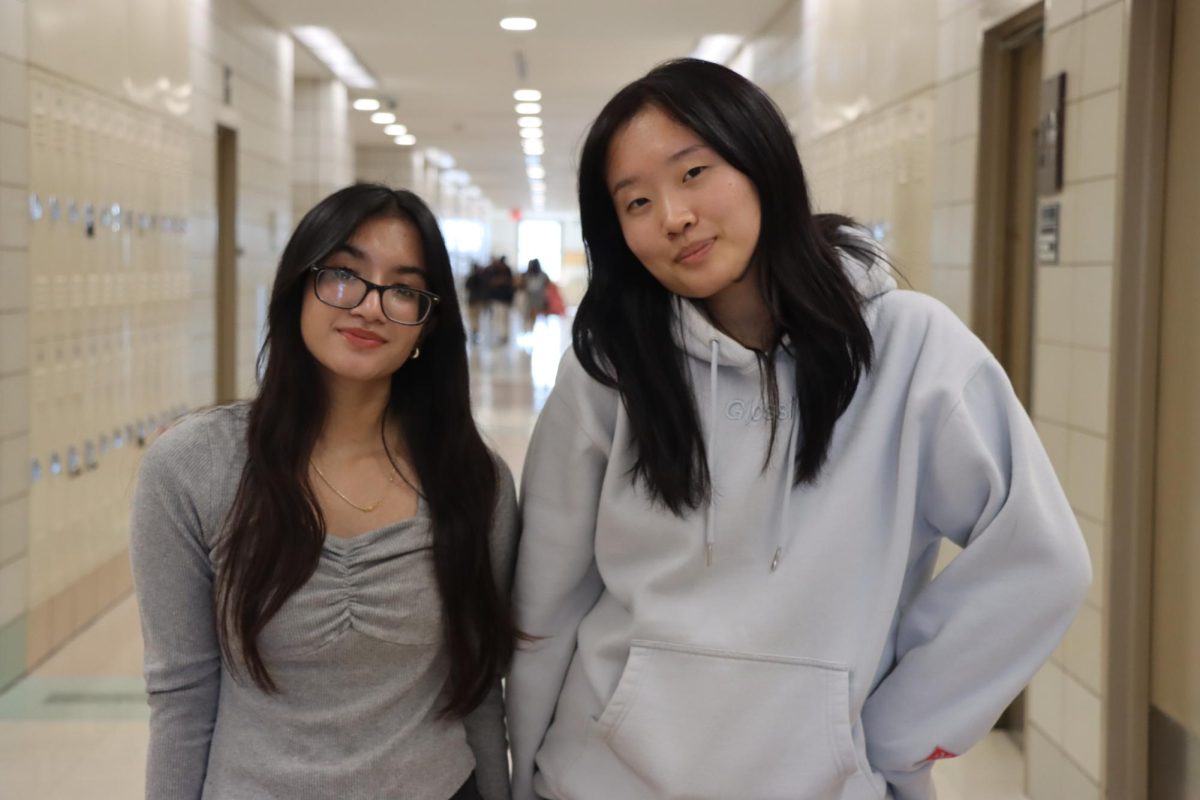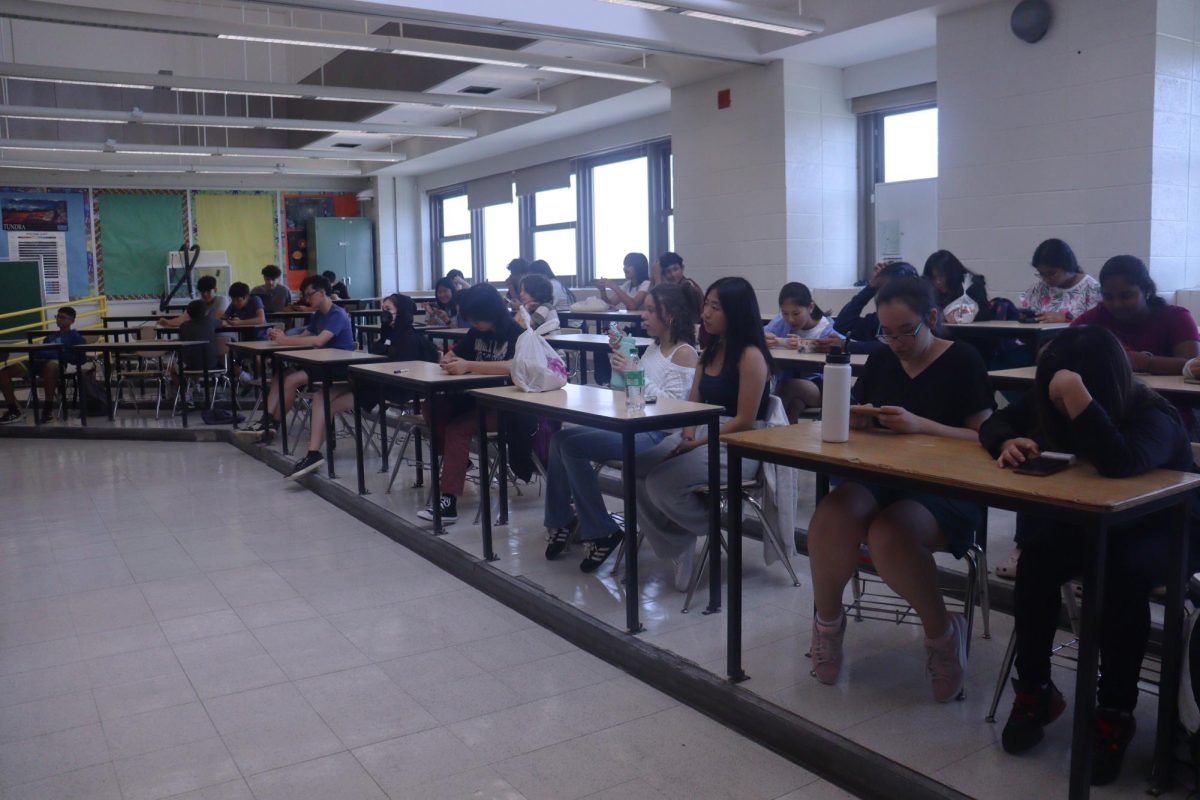
In the cafeteria, a row of new color-coded garbage bins now stands along the walls with arrows and instructive posters that encourage students to separate their waste into four different categories. These bins are a part of the Curbside Composting Program, an initiative by the Department of Sanitation to ensure proper waste management that is expanding to all NYC schools.
On January 8, GrowthNYC’s Zero Waste Schools distributed the bins to Townsend Harris, as one of the schools in this expansion. There are four kinds. First, is a bucket with a strainer that students can use to dump out liquids from bottles and cartons. Next are blue recycling bins for most plastics (like food containers/plastic bottles), metal containers, food cartons/boxes, and glass bottles/jars. Gray trash bins are for non-compostable trash like food wrappers, juice pouches, tissues, and plastics bags. Last are the brown bins for food scraps and food-soiled paper. In addition to the posters that show students what goes in each bin and the numbers that indicate the order in which students should dispose of items, lunch aides have been helping students determine what to throw into each bin.
Assistant Principal of Organization Ellen Fee said that she has high hopes for the initiative. “I think there are a lot of students and staff that are ready to take the next step to make our school more sustainable and climate-friendly in terms of trash,” she said.
However, school aide Libby Lushing said that students have not been paying close attention to what goes in each bin. “So far, [it is] not doing too well,” she said. “I think it’s very clear, but students are not paying attention [and] they should.” She said that she tries to help students put things in the proper place when she’s there, but she cannot be by the bins at all times. Moreover, given the clear signs, the instructions, and the color-coded bins, it’s unclear why she needs to be there. “I think a first grader would be able to understand clearly,” she said.
Difficulties with putting the proper waste in the proper place are not exclusive to Townsend Harris. Last June, The Recycling Partnership, a Washington, D.C.-based nonprofit, released a report saying that half of all recyclable waste in American homes — some 15 million tons of it — ends up in landfills. Over ten years ago, The Classic reported that efforts to recycle waste at THHS often failed because students and staff would regularly taint the contents of recycling bins with unrecyclable trash.
While this new program may have had a slow start at THHS, students told The Classic that they believe it is a necessary stepping stone towards environmental consciousness.
Sophomore Jenna Abdelhamid said, “I believe that any progress, no matter how small, is important to contribute to a greater cause.”
Junior Kayla Lin said, “For me, the bins made me conscious of the things in my tray and what bins it should be in.”
“The recycling bins are definitely a step in the right direction,” said freshman Lillian Parella, a member of The THHS Green Team. “However, there is a lot more to the solution than just that.”
In 2019, the World Wildlife Fund released a report on school cafeteria food waste. According to the report, American schools generate approximately 530,000 tons of food waste annually, equating to 20.9 billion gallons of water and 1.9 million metric tons of CO2. To this, New York City schools contribute 40,000 tons of waste per year and visible trash and food waste continue to increase. The Curbside Composting program aims to divert trash from streets and landfills and turn food scraps into renewable energy, biosolids, and compost.
However, the fact stands that some students are simply not as environmentally conscious as others, prompting them to disregard the clearly posted instructions.
To confront this issue, Lillian suggested that the school include an incentive to get all students to properly use the new bins.
“I think a better way to enforce it is to make it a competition somehow, like we did with the Reading Initiative to get people to read more,” she said. The Reading Initiative is a THHS program that encourages students to read more in exchange for points and prizes for both themselves and their grade.
“I don’t think there’s any 100% foolproof solution to suddenly get all students to be motivated towards using these bins in the correct manner,” said Jenna. “However, I do believe that educating students more about the cause can be a really powerful tool in changing their mindsets. Even just understanding how the process works could impact the actions we decide to take the next time we have to dispose of something.”

